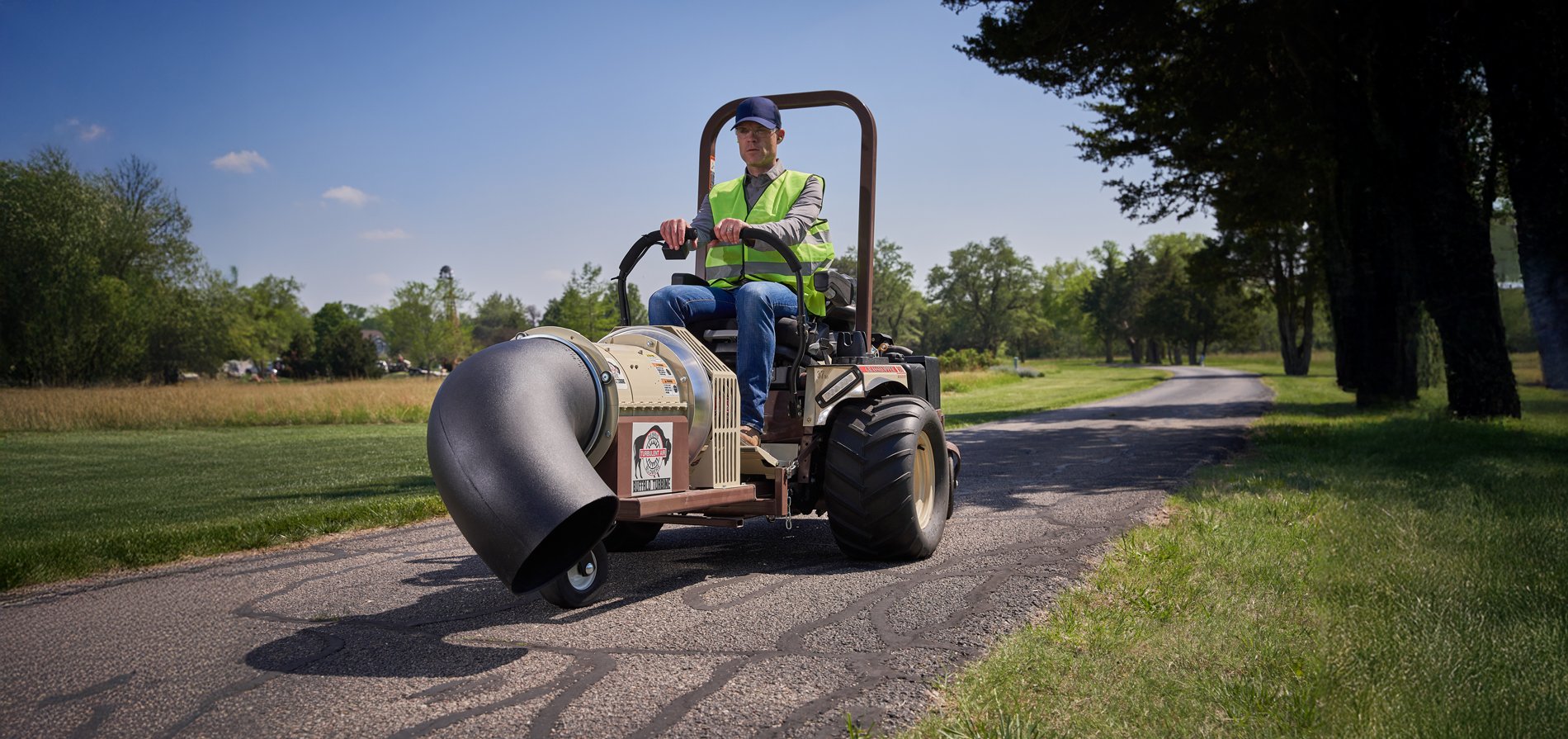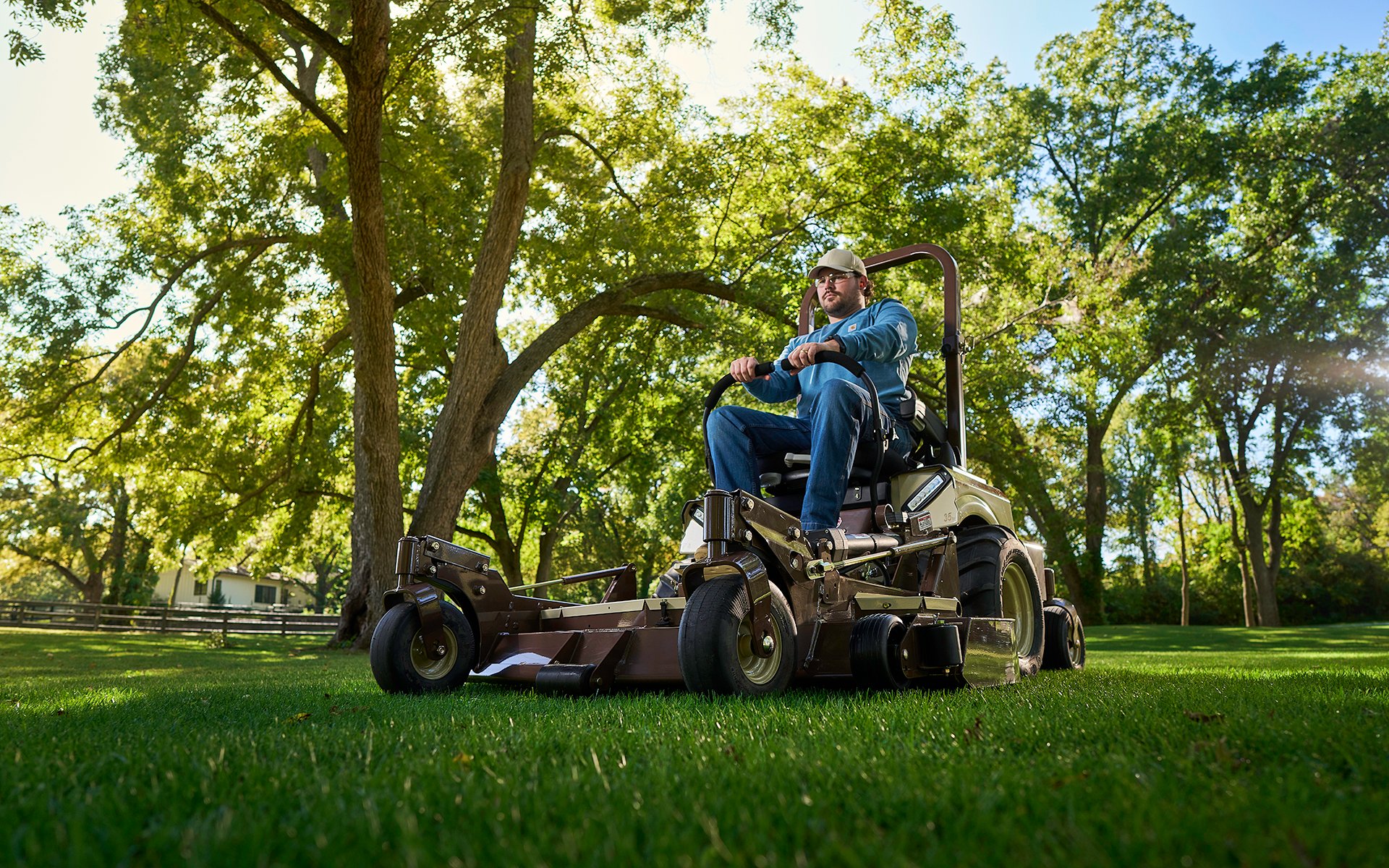Summer Mowing Strategies For A Healthy, Green Lawn
When the heat is on, your lawn’s “stress level” soars because it’s thirsty and battling dry conditions, the sun’s rays, and all the weed and disease pressure that come with summer weather. But you can keep your lawn healthy and green without constant watering. All you have to do is adjust how and when you mow your lawn.
First, let’s talk about grass height. While you might prefer a lower-cut manicured look and figure it buys you more time between mowings, this is not the best approach when temperatures creep up. We’ll explain why turf improves in summer when you let it grow taller. Plus, you can adopt some simple mower strategies as habits to maintain a healthy lawn through the seasons.
Here are some strategies for mowing in hot weather and keeping your lawn green.
Let It Grow––Taller Grass Stays Healthier
Longer grass develops deeper roots that can absorb more moisture and nutrients from the soil. When grass is taller, it also protects the soil by providing shade and reducing evaporation. Roots can access more moisture, and your soil will retain more water to sustain healthy grass.
>>Pro Tip: Raise The Mower Deck
Check your operator’s manual to determine how to properly adjust mower deck height, as lever location can vary based on the mower type and model.
>>Pro Tip: Follow The 1/3 Rule
Allow grass to grow to 4-1/2 inches before mowing it to 3 or 3-1/2 inches. Use a ruler to guide you if necessary. You should never remove more than one-third of the turf stand at once. Make the first cut following the 1/3 rule. If your lawn is too tall to cut it down to the optimal height all at once, then make a first cut following the 1/3 Rule.
Time Mowing To Beat The Heat
During warmer weather, you want to mow your lawn before high heat to protect yourself from getting dehydrated and sunburned. But it’s also important to allow the morning dew to disappear so you do not damage the lawn and cause more stress.
>>Pro Tip: Mow In The Morning
The best time to mow your lawn in summer is usually between 8 a.m. and 10 a.m. Take a bottle of water with you, and wear a hat or protective clothing—it’s better to sweat in long sleeves than get a bad sunburn. Use sun protection on exposed skin, and don’t forget the back of your hands if you are not wearing gloves.
Watch For Dull Mower Blades
Raising the mower deck is a must during summer to protect your grass. So is making sure mower blades are sharp. Dull mower blades tear the grass. These ragged edges will welcome insects and disease. Not to mention, running a mower with dull blades over your lawn results in a ragged finish—not the neat, clean appearance you want to achieve for your lawn. Not sure if the mower blades need sharpening?
Here are a few clues:
- Uneven lawn after cutting
- Torn grass blades
- Chips or dents in the blade
- A thinning blade (since dirt, dust, and grass wears away the surface over time)
>>Pro Tip: Keep Mower Blades Sharp
Skip Collecting Grass Clippings
When you only remove one-third of grass blade height at a time and stick to the recommended mowing height for your grass height, you can mulch the clippings or allow them to remain on the lawn. The grass clippings will break down and actually feed your lawn, reducing fertilizer requirements in many cases. According to the
Oregon State Extension Service, grass clippings contain up to the equivalent per weight of 3 to 4 percent nitrogen, 0.5 percent phosphorus, and 2.5 to 3.5 percent potassium—the same Nitrogen/Phosphorus/Potassium (NPK) ratio you find in commercial fertilizer. Their research shows fertilizer application rates can be cut in half using a mulching mower.
>>Pro Tip: Mulch Or Leave Clippings On The Lawn
Add a
mulching discharge package that cuts and re-cuts clippings, forming humus that delivers nutrients to the soil and grass. If you mulch grass clippings, watch the mower blades because
they tend to dull a bit faster. And if you plan to simply allow clippings to discharge as usual, as long as you stick to the one-third rule, you’ll benefit from allowing clippings to break down into the soil.
Stay Cool and Love Your Lawn This Summer
Making simple adjustments to your mowing plans this summer can help your lawn stay healthy, even during the hottest conditions. Interested in more mowing tips from the pros at Grasshopper? Check out our
library of how-to videos or sign up for our
newsletter. Thinking about a new mower? Our team can help you
choose the best model for your needs.




.jpg)
